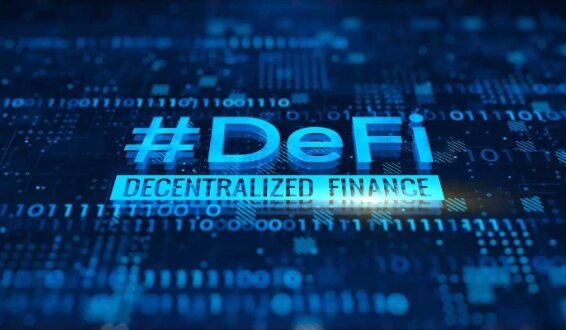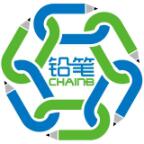Crypto Ecosystem and Financial Security Issues
The rapid development of the crypto ecosystem has brought new opportunities, and it is clear that the development of technology has started in a new era, making payments and other financial services cheaper, faster and easier to access, and allowing money to flow faster. across borders. , crypto assets have the potential to become faster and cheaper payment tools for cross-border trade. Decentralized finance (DeFi) can become a platform to provide new inclusive and transparent financial services. Despite their potential benefits, the rapid growth and widespread use of crypto assets pose financial risks. In October 2021, the International Monetary Fund (IMF) discussed the impact of expanding the crypto ecosystem and measured the impact on financial security risk, concluding with eight recommendations for policy.
introduction
The rapid growth of the crypto ecosystem has paved the way for new ways. We see technological developments beginning to make the new era of payments and other financial services cheaper, faster and more accessible, and enable faster cash flow across the border. Crypto-assets can become faster and cheaper tools for cross-border payments. Decentralized finance (DeFi) can become a platform to provide new inclusive and transparent financial services.
Despite their potential benefits, the rapid growth and widespread use of crypto assets pose financial risks. This white paper discusses the implications of expanding the crypto ecosystem and measures the impact on financial security risks. There are also eight legal recommendations at the end of this article.
Crypto assets continue to grow with ups and downs
The cap market for crypto assets grew rapidly in early 2021 at an incredible price. In early May 2021, the market capitalization of crypto assets reached an all-time high of $2.5 trillion (Figure 1 below). This was followed by a 40% decline in May, mainly due to the growth of commercial businesses concerned about the environmental impact of crypto assets and increased regulation of crypto ecosystems in many countries. Some analysts have also suggested that the May downturn could lead to further repercussions due to the overuse of crypto assets (Figure 2 below). After May's decline, the cryptocurrency's market value hit $2 trillion again in August and September, with crypto assets up 170% year-to-date from the start of the year.

Daim duab 1: Market capitalization of cryptocurrencies (Unit: billion USD)

Daim duab 2: Clearing futures and open interest ($ billions)
Although prices rose, the return of the volatile cryptocurrency was less after adjusting for weakness. For example, over the past year, Bitcoin's risk-to-trade ratio has been compared to general tech or the S&P 500 (Table 3 below). However, traders holding bitcoins will suffer a greater loss than those holding stocks. The relative ease of returns on these crypto assets will be higher compared to other assets that have seen declines, such as local gains and investments in some new and developing markets of a weak nation.

Figure 3: Risk-adjusted back (Sharp ratio)
He also pointed out that crypto assets are less likely to interact with other assets, giving investors the opportunity to have more of their data. While this is true for some, the relationship between these cryptoassets and certain cryptocurrencies has increased significantly in recent times due to market pressures, such as the sale of financial cryptoassets during COVID-19 2020.
However, it is undeniable that the total market value of crypto assets has increased, and the main point is the emergence of certain blockchains with new technologies and financial resources.
(1) Stable Coins
In 2021, its market capitalization reached over $120 billion (Figure 4 below). Tether is the biggest stablecoin of them all, but its stock market has shrunk due to some crypto exchanges in the middle having developed similar patterns (such as USDCoin issued by Coinbase and BinanceUSD issued by Binance). But overall, stability coins outperform all other cryptocurrencies in terms of trading volume (Figure 5 below). This is usually because it is necessary for the settlement of exchange sites and derivatives. The value stability of top stability coins is also improving, and their relative value stability protects users from the volatility of other crypto assets. You are beaten. Outside.

Figure 4: Stablecoin Market Cap ($ Billions and Percentage Shares)
(2) Ethereum and other "smart contract" blockchains
Bitcoin is still an important crypto asset, but its market share fell from over 70% to under 45% at the start of the year. One pattern to note is the growing interest in new blockchains that can carry smart contracts designed to control early stages by introducing features that allow them to handle ongoing business interactions and issues well. The most prominent of these is Ether (released by Ethereum), which overtook Bitcoin in the packaging industry in early 2021 (Figure 5 below).

Figure 5: Daily Volume ($1 billion, 30-day moving average)
(3) Decentralized finance (DeFi)
DeFi has grown from $15 billion at the end of 2020 to around $110 billion in September 2021 (Figure 6 below). The main reasons are: First, the rapid growth of exchanges where users can trade without intermediaries. Second, it provides a credit platform that connects borrowers and lenders without the need for consumer risk assessments, and third, these services operate directly on blockchain type without consumer reviews.
Most DeFi today is based on the Ethereum blockchain and uses Ethereum-based tokens, including fixed funds. DeFi is also one of the main drivers for the rapid growth of stable and worthy coins. Chainalysis said DeFi users are now mostly affiliate organizations in developed countries, with consumers, new businesses and developed countries generally falling behind when it comes to adopted children.

Figure 6: Total cost of $1 billion
Impact of crypto-assets on financial security
In October 2018, the Financial Security Commission (FSB) concluded that crypto assets do not pose a significant risk to global financial security, but identified a number of factors that could alter their measurement. These factors include huge market share, benefits of investor confidence, risk of direct and indirect exposure of financial companies, and risk of using crypto tools for payment and settlement.
Due to the improvement, something started to occur and have new risk. First, the business value of encrypted tools increased 10 times, and now it is small to compare the government employees and improvements. Second, the incident of investors who drop increasingly convinced as far as banned in the market, and the disruption in the cryptographic sales Limit. The importance of the third cryptographic tool increases. . Businesses of encryption changes in some countries have been high. Fourth, payments that use treasure for unnecessary products, but there is some exception, but recently, many of the world pay. The cost of ecology for payment can be faster using encrypted assets. Finally, new danger has been found firm coin and defi, and the year, 2018, excellent coins or defi. Services can be used and used in the decision.
Supporting innovation in the crypto ecosystem is important and beneficial for the country, but the risks must be managed. Globally, risky financial security seems to be present, but the major impact of crypto assets, especially fixed coins, remains to be seen, established at a time and is risky for some emerging markets and developing countries which are gaining momentum. In the following chapters, 1. Operational risks of the crypto ecosystem, business processes, information available and problems posed by transnational companies 2. Design, use and implementation of the crypto ecosystem, national and global governance 3. Macro stability -financial issue led by the crypto -ecosystem.
Crypto ecosystem challenges
The rapid development of the crypto ecosystem will lead to access to new players, some inability to operate, the ability to manage cyber risk, etc. These problems may lead to physical malfunctions and malfunctions, which may affect the traditional trade and cause consumers a lot of money loss. So far, the fall in these risks has not had a major impact on global or national financial security. However, the macroeconomic significance of these risks will further increase as the crypto asset market grows. Moreover, since the crypto ecosystem always faces high risks, it trusts many companies (for example, Binance holds more than half of its market share).
The crypto ecosystem is exposed to fraudulent users and business risks due to limited or insufficient disclosure and oversight. Most crypto-assets are speculative assets with high volatility. A notable example has recently been the growing popularity of "meme tokens" (Figure 7 below). These tokens are designed to be estimated and their value is influenced by social media trends.

Figure 7: Highly Sought After Investments (e.g. Meme Token, Dogecoin) All Challenges in 2021
In this case, traders will incur losses as they cannot trade tokens. This is an exception in the security industry. For example, while over 16,000 tokens were listed on various exchanges, there are now only about 9,000 tradable tokens. This risk can be extended up to 125 times your initial investment if you use the leverage provided by a cryptocurrency exchange. In response to these risks, several countries have taken action or issued public warnings in recent months, including banning banks in Argentina, Mexico, and Thailand from providing tokens with certain characteristics. Crypto assets of various crypto exchange products.
The emergence of DeFi products is also significant, compared to conventional cryptocurrencies, DeFi products have a lot of logic, poor visibility and inaccurate or faulty computer code, which brings high risk and control. The role of law enforcement in monitoring and managing these assets is complex. As a result, many DeFi products do not pose enough danger to make money or provide investors with adequate warnings of their own major shifts (Figure 8 below), and situations where parties quit but mislead investors. is it. , like rubbing the husks. Additionally, DeFi has been the victim of attacks, including the loss of nearly $600 million by the Polychain hack last August.

Daim duab 8: USD stable lending rate (percentage)
The anonymity of crypto assets and the lack of working models create huge rules. The police can track transactions made in the blockchain, but will not be able to identify the parties to the exchange. Additionally, crypto ecosystems are governed by regulatory processes that vary from country to country, resulting in little to no monitoring and information sharing across the zone. While some progress has been made in the Financial Action Task Force (FATF) AML/CFT role for crypto providers, the action is still in its infancy.
Monitoring the operations of crypto asset providers is difficult as data is restricted and hacked. Currently, the information available to regulators is public information published by cryptocurrency providers, but there is no standard format for this information, the content of information presented by the exchange is very different, and the industry endeavored to improve the level of exchange. may be wrong.
In order to get more exchange data, we need to analyze the chain data, and the data analysis tool is still in its infancy, which makes this job very difficult at the moment. There are a number of data analytics companies that do not provide reliable macro metrics for the operation of the chain, but have focused on illegal market research. The FATF recently reported that peer-to-peer (P2P) marketing research was conducted by seven data providers to expose threats to the growing population doing business illegally. However, the research shows that the results and conclusions were obtained from different companies (Figure 9 below). One firm estimates that 80% of Bitcoin's market value in 2020 will occur without cryptocurrency providers, while another estimate is only 3%, and data shows that the uncertainty of the Illegal use of crypto-assets is increasing. It's big, and there's no clear indication that the cryptocurrency industry has turned into a joint venture, making it hard to decide anything. Cryptocurrency is used illegally.

Figure 9: Estimation of Bitcoin P2P collaboration (initial teacher) of 7 data providers
Since crypto-asset trading does not limit the territory, many crypto-asset companies offer and market their services in different fields, which makes management and administration more difficult. They are generally headquartered in the region with flexible regulations, tax support and the rule of law. For example, most cryptocurrency trading occurs at exchange financial institutions (Figure 10 below). Additionally, many countries poorly regulate the behavior of crypto asset providers, which can lead to regulatory scrutiny. For example, users can access crypto assets through international crypto exchanges or wallets and redeem the best perks for the crypto assets. Although these providers do not have a relationship with the bank in the user's country.

Figure 10: Business Registration Exchange (start only)
Special issues for stablecoins
The term "stablecoin" refers to a different group of crypto assets, all of which are stablecoins designed to value a single asset (usually USD) or a group of assets, but can track the type of support and a good credit. Rate stabilization mechanisms distribute stable money.
(1) Money-Based: Fully collateralized by cash or cash and securities such as US bank accounts and material information. These stablecoins can be traded by au pair traders. Their savings are usually managed by regulators, like banks in the United States, and can provide greater visibility, like broadcasting special investments.
(2) Asset-Based: Get full support from non-cash equivalents (e.g. corporate contracts, business letters, or commodities) and cash. These stablecoins are similar to financial markets before the post-crisis crisis. Senders and exchanges can redeem fixed coins immediately at par, but in some cases (especially during a market crisis) some merchants will extend redemption, provide in-kind redemption, or pay a higher ransom.
(3) Encrypted Heritage: Supported by other encrypted devices. For example, DAI is backed by a combination of crypto assets such as Ethereum and Bitcoin. These fixed coins are usually created by distribution, not supervision, and are considered part of DeFi. Another category includes “algorithmic” (also known as “unsecured”) stability coins, which are designed to stay pegged using algorithms that increase or decrease the token supply based on the market.

Figure 11: Asset Value for Top Stablecoins (Left Percentage, Top Market Value, Billions of Dollars)
Regulations for stationary parts vary by region, raising concerns about inconsistencies, regulatory inconsistencies, and regulatory oversight. Here are three types of business models for fixed income securities:
(1) Full control: Currently, no fixed amount can meet this situation in one order. These fixed income securities are provided by the financial services company and can meet prudential rules, behaviors and controls to be fully controllable.
(2) Partial control by key standards: means the restriction of certain types of fixed funds (e.g. AML/CFT) for conduct and remediation purposes. Certain consolidated companies, such as trust companies and currency exchanges, are licensed and regulated by existing regulatory frameworks in the United States. Regulators have access to information, but regulatory tools may be restricted and may not address all financial security risks. Additionally, some exchanges and wallet providers that support stablecoins may only be AML/CFT compliant and may be dangerous in other areas.
(3) Lack of Control: Lack of health or behavior on stablecoins. Many securities now fall into this category as many regulators are still developing securities rules.
Currently, the publicity of many stablecoins is not good. Although stable companies have improved in this regard, better disclosure has yet to be achieved at the same level of disclosure standards as companies and short-term finance. For example, Tether is currently disclosing details about its records, but the disclosures have not been verified by independent accountants and some sensitive data is still unavailable, including address, earnings, and business records. Additionally, Tether has recently reported more inconsistencies compared to other large fixed funds. Tether allows insurers to ransom 1:1 "on the fly" at a fraction of the cost, but only a third of its capital is recovered from cash and savings, with half the investment in paper .
Dangerous work can lead to unwanted sales of business cards. In many countries, including the United States, paper stocks are less liquid than other short-term assets, such as government securities, when investment reserves are strong, especially in times of crisis. high in the market (as seen at the time of the 2020 COVID-19 sale). The risk of infection may be higher for some people who leave or work. This risk may be unique to Tether now, but other stablecoins will see the risk spread in the future given the size and type of hold.
Overview of Cryptocurrency Market Development
Some emerging markets and developing countries are using cryptocurrencies faster than developing countries. According to a recent survey by Statista, the top five countries using or capitalizing on cryptocurrencies by 2020 are the Commonwealth of Economic and Development Institutions (EMDE), and the least adopted countries are developed countries. Another researcher came to a similar conclusion. New emerging markets in Asia were the first to use cryptocurrency, while developing countries such as the UK and the US made progress. Many studies of newly traded countries also show an increase in the adoption of crypto assets over the past year.
Beyond research, tracking adoption in a country can be challenging. Until now, there was no good way to estimate the country's commodities or crypto. One of the most commonly used metrics is an estimate of the IP address visited by a crypto asset site. Figure 12 below shows statistics for several of the largest cryptocurrency sites in this way, and the results support the research above and show accessibility to many global cryptocurrency exchanges in emerging markets. and developing countries, but also to measure the real world. To do. Use of cryptographic tools.

Figure 12: Geographic distribution of Crypto Asset Exchange visitors (October 2020 - June 2021)
Another indicator is the market volume of cryptocurrency exchanges which only works in certain countries and not worldwide. Among the examples of such exchanges from new and developing countries, the volume of the industry is expected to increase in 2021, with data showing that some crypto commodity markets have been benchmarked against the local market (pictured below). 13).

Figure 13: Market volume of registered cryptocurrency exchanges in the EMDE region (% of local market volume)
In addition to this, some blockchain analysis companies, such as Chainalysis, attempt to determine where crypto capital has gone through the media. Similar to the survey, their data shows that adoption in emerging markets and developing countries has increased, and while the accuracy of this data is not yet known, it has exceeded adoption in developed countries. (Figure 14 below).

Figure 14: Statistics of value received from the channel for 50 EMDE countries (% of GDP)
Many drivers of cryptocurrency market growth, poor macroeconomic policies and unprofitable payments in some new and developed countries have encouraged the use of cryptocurrencies. This could also have implications for the adoption of more crypto assets, such as the stock exchange, which are available across the country (Table 1 below), but some of the recent campaign will be unique. to emerging markets and developing countries. For example:
• In some developing countries, weak bank lending and weak financial institutions can lead to property swaps as owners seek more valuable commodities. The high value of the dollar is also a permanent risk in many emerging and developing countries. The crypto ecosystem can help owners alleviate some of the liquidity shortages, such as restrictions on exchange rates and the ability to use international crypto exchanges or other insecure means to avoid the risk of receiving and store foreign assets.
• Lack of payment and restrictions on access to financial services can also increase costs. A prime example of this failure is the lack of integration of various door-to-door payments, returns and transaction issues. Given the percentage of non-bank investors in some emerging and developing countries, money transfers are usually done through a cumbersome process. Paying for crypto assets can make some of these services faster and cheaper, especially through a combination of fixed funds. Of course, these benefits depend on the use of the Internet and other technologies, which are rare in many countries.
Table 1: Ability to Drive Adoption of Crypto Assets by Users in Emerging Markets

The benefits of using cryptocurrency come with the macro-financial issues that have succeeded in adoption.
Acceptance may be restricted (e.g., small use of crypto assets for repatriation) presents some of the issues discussed earlier (see "Crypto Ecosystem Challenges" section), but has little impact on financial policy or investment. However, even if the payment is made by cryptocurrency transfer, the cryptocurrency assets are only held for a short period of time until the user converts them into a local currency for the purchase of items. household.
• Widespread adoption, such as adopting fixed coins as payment and savings rates, can lead to greater competition by strengthening the economy. The dollar affects the ability to maintain good financial governance by central banks and creates financial risk related to the imbalance of balances of payments, banks, businesses and families. This may be further exacerbated by financial risk as medium-term banks are unable to provide financial support for currencies. Cryptocurrencies can also pose a threat to financial policy. Crypto assets may support tax exemptions, and as the central bank has dropped sharply in the economy, seigniorage income may also fall. In particular, the use of crypto assets as a national currency carries great risks and is not short-lived.
The growing demand for crypto assets could lead to disruption in foreign investment. Cryptocurrency exchanges play an important role in facilitating the exchange of local currencies and crypto assets and securities. For investors to be able to trade in the cryptocurrency market 24/7, some investors need to trade more currencies (e.g. USD-, Bitcoin and USD-local currency) to generate income. The results are not current (local currency - Bitcoin). This type of triangular auction is usually facilitated by affiliates who have access to larger products in the industry that do not include retail participants (such as offshore financial markets). These companies can serve as a gateway to convert cryptocurrency assets into capital outflows by trading the exchange rate at a critical time of demand for crypto assets. . The recent rapid growth of the cryptocurrency market for silver in some countries and new developments (Figure 15 below) could have a significant impact on exchange rates, and financial authorities in many countries have recognized this risk. . I started limiting errors.

Figure 15: FX EMDE Volume on Crypto Exchanges (FX Interbank Volume Ratio)
The policy measure could offset to some extent the impact of the growing demand for crypto assets in overseas markets. Capital management measures and other measures affecting cryptocurrency can have a major impact on business development. For example, in South Korea, the cost of buying Bitcoin reached 50% in 2018 due to strong domestic demand (Figure 16 below). However, these restrictions in the cryptocurrency market may create further momentum as the market shifts from trading to illegal or invisible channels, such as peer-to-peer chat and the Telegram instant messaging system.

Figure 16: Bitcoin Premium in local commerce (percentage deviation since 2018)
The shift from a “mining industry” to new ventures and national development could have a major impact on investment and energy consumption. Identifying strings for various crypto assets is accomplished by so-called proof-of-operation, or "mining," in which network members use a variety of counting strengths to solve difficult mathematical problems. After the explosion of the Chinese mining industry in early 2021, the workforce has only started to move to other emerging markets, developing countries and the United States (figure 17 below) . This decision could have significant implications for:
(1) Electricity: Miners use electricity to power their equipment. Mining on the Bitcoin network represents around 0.36% of the world's electricity, which is comparable to consumption in Belgium or Chile. Big changes in employment can only lead to increased electricity consumption at home, especially in countries that support rising electricity prices. However, next-generation blockchains such as Ethereum and other smart blockchains require less energy than Bitcoin.
(2) Capacity: Employees greatly benefit from the form of crypto assets for their chain operation. For example, the average Bitcoin and Ethereum blockchain mining revenue in 2021 is over $1 billion. Major operating costs for miners (like electricity) are usually paid in cash, but their income comes in the form of cryptocurrency chains, creating a new investment.

Figure 17: Bitcoin mining activity by country (share of China's total global power)
If the cryptocurrency ecosystem trades bank accounts and loans, the banking industry can also be hit hard. Increased competition from stablecoins to bank deposits could allow local banks to switch to less reliable and more expensive banks to service loans. In addition to the direct loss of interest income, the loss of consumer relationships and information exchanges can affect consumer credit risk and the ability to provide commercial products to consumers.
Right to macro-financial stability
Fintech innovation, including crypto ecosystems, has the potential to improve macroeconomic economies, especially in emerging and developing countries, through better financial services and more accountants. On the other hand, policy makers need to strike a balance between promoting financial innovation and promoting competitiveness, with a commitment to open, free and competitive markets to address these issues of financial integrity, protection consumers and financial security. First, regulators and regulators should be able to monitor the rapid development of the crypto ecosystem and the risks associated with the use of crypto assets and the existing risks.
Crypto assets operating on an anonymous basis pose a high risk to financial justice, but for some stablecoins it can solve legal issues. This chapter identifies eight policies that address three key areas: (1) governance, oversight, and oversight of the cryptocurrency ecosystem, (2) stability risk management, and (3) macroeconomic management. in emerging markets and developing countries is problematic. financial risks.
1. Management, supervision and maintenance of the crypto ecosystem
National regulators should prioritize compliance with international standards for crypto assets. Current standards for crypto-assets are limited to the FATF AML/CFT and BCBS agreements on the disclosure of crypto-assets by banks, but other standards such as the International Securities Commission (IOSCO) and financial markets standard payment method of the International Settlements Commission. . and Market Infrastructure (CPMI/PFMI) – providing a solid foundation for the management and administration of crypto assets. When cryptocurrency trades problematic tokens that meet the concept of security, these organizations must adhere to existing international standards for securities trading. All legislations are necessary to comply with these standards. Globally, lawmakers should prioritize making cross-border payments faster, cheaper, more transparent and more integrated into the G20 roadmap on cross-border payments. The IMF can support these efforts with advice and assistance.
Financial risk reduction should be at a good level, globally. Where standards are not yet established, administrators should use existing tools to manage risk and implement fundamental changes to crypto assets. The growing impact of crypto-assets may require immediate regulation in some countries. Managers should use existing metrics and international standards to focus on high-risk areas, such as exposure to portfolios, exchanges, and financial institutions. Authorities must also ensure that regulatory changes are sufficient to adapt to future international standards. At the same time, depending on the situation, temporary measures can be taken, including alerts for consumers and training plans for investors. This is especially true when crypto assets are growing rapidly, such as in some emerging markets and developed countries.
National authorities need to strengthen cooperation across governance and governance boundaries. For example, due to the difficulty in implementing and adhering to proper regulations, some authorities have resorted to strong measures, such as restricting the use of crypto assets. Although the ban will directly impact the cryptocurrency exchange market, it will still be possible for individuals to trade and trade crypto assets in other ways. Therefore, the police should be able to actively work with the police and international procedures by setting up a body to maximize the effectiveness of control and reduce compliance with decisions. Improving cross-border cooperation can strengthen governance, but the capital needed for such governance can pose serious challenges for emerging markets and developing countries.
Prompt resolution of disputes is the basis for informed decision-making. Higher data generation can enable better tracking of new developments, better understanding of risk, and support management of the crypto asset industry. In this case, international agreements should be concluded in accordance with the principle of the minimum for data. A global taxonomy facilitates data structure and collaboration. There is also room for global collaboration in collecting and sharing private business information for governance and public policy.
2. Risk management by Stabilitycoin
Stablecoin takes into account the recommendations of the Financial Security Commission, which recently finalized 10 high-level recommendations on governance, risk management, transparency and reimbursement, to ensure that risks and business are relevant for the service. The principle is “same job, same risk, same rules”. Above all, authorities need to ensure that stable spending is effective in managing credit risk and risk, as well as operational, AML/CFT and cyber adequacy. The rules of a stable currency can be reinforced by a series of agreements from national authorities that include various risks for the stability of the country. Some US dollar-pegged stability coins can solve a variety of legal issues if they meet bank authorization requirements, so they can seek business with authorized banks in the United States.
There are high risks that should be carefully monitored for the operation of the coin, including regulatory, regulatory and regulatory controls, storage and handling, exchanges, etc., all affect consumer protection, financial security, commercial and financial justice, operations and cooperation. . dangerous resilience. Authorities have maintained a set of rules to deal with the impact of crypto assets on digital platforms and a variety of assets, independent inspection of records, appropriate rules for the first network lead and consultants, and the rules of professional development and cyber-resilience must be decided. distributed information technology.
3. Macrofinancial Risk Management in Emerging Markets and Developing Countries
The withdrawal or renunciation of dollars requires strong macroeconomic regulations, but these rules alone will not suffice. Crypto assets themselves do not alter market power, leading to increased global usage or dollarization. However, technological improvements in the crypto ecosystem, especially stablecoins, will strengthen the backdrop for asset earnings and transformation. As a result, the excuse for wrongdoing is greatly reduced.
Countries that want to oppose the dollar must enforce laws and regulations to ensure the integrity of financial regulations, governing freedom of banking, maintaining sound financial condition, and prohibiting the use of foreign currencies. Similarly, simply providing CBDCs cannot replace the incentive to hold exchange gains, but if CBDCs meet the demand for better payouts, they can help drive the dollar down. Many countries have developed similar measures to take advantage of new technological advances and develop new payment systems that allow instant payments in personal currency.
We also need to rethink the creation of capital constraints in the digital world, including stable financial management. In new platforms that are not typical of existing business management systems, it may be more difficult to use existing management tools to manage capital flows as the cost changes in the text of the l cryptography tool. In this, the effectiveness of management, supervision and control is respected. Competition throughout the region. Addressing intellectual, legal, administrative and regulatory issues therefore requires cooperation and cross-border cooperation. In particular, the financial authorities of the countries where companies are established should be encouraged to establish good relations with the local authorities in order to maintain a stable financial position.

Scan QR code with WeChat






























